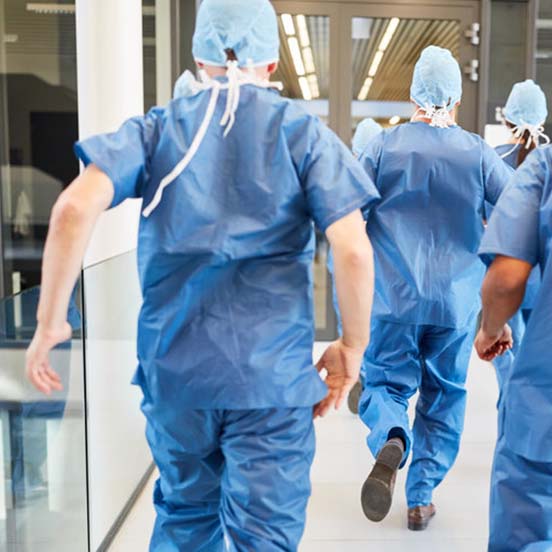Capítulo 1. INTRODUCTION TO FIRST AID
1. Introduction
2. General concepts of fist aid
2.1 Definition of first aid
2.2 First aid features
2.3 Basic concepts in first aid
2.4 General principles of first aid
2.5 Resources
3. Legal framework in Spain
4. Signs and symptoms
4.1 breathing
4.2 pulse
4.3 pupillary reflex
4.4 skin colouring
4.5 blood pressure
4.6 body temperature
5. Assessment of the injured
5.1 primary assessment
5.2 secondary assessment
6. Anatomy of the human body
6.1 head
6.2 trunk
6.3 limbs
6.4 systems and organs
7. Key points
Capítulo 2. INJURIES IN SOFT TISSUES, FRACTURES AND BURNS
1. Introduction
2. Trauma
2.1 Classification of trauma
2.2 Contusions
2.3 Sprains
2.4 Dislocations
2.5 Fractures
2.6 Polytrauma
3. Wounds
3.1 Classification of wounds
3.2 Gravity of the wound
3.3 Action procedures against minor, serious and special wounds
4. Haemorrhages
4.1 Classification of haemorrhages
4.2 Action procedures in haemorrhages
4.3 Tourniquet
5. Burns
5.1 Classification of burns
5.2 Extension and complications of burns
5.3 Action procedures in burns
6. Key points
Capítulo 3. SPECIAL SITUATIONS
1. Introduction
2. Poisoning
2.1 Manifestations of poisoning
2.2 Classification of poisonings
2.3 Prevention of poisoning
2.4 Action against poisonings
3. Sting and bites
3.1 Classification of stings and bites
3.2 Action against stings and bites
4. Shock
4.1 Classification of shocks
4.2 Action against shocks
5. Electrocution
5.1 Gravity of the injuries
5.2 Injuries after an electrocution
5.3 Proceedings in an electrocution
6. Hypothermia and freezing
6.1 Hypothermia
6.2 Freezing
6.3 Proceedings in hypothermia and freezing
7. Drowning, suffocation and obstruction of the airway
7.1 Signs and symptoms of lack of oxygen
7.2 Obstruction of the airway by a foreign body
7.3 Drowning
7.4 Proceedings in the presence of an obstruction of the airway
7.5 Proceedings in a drowning
8. Key points
Capítulo 4. CARDIOPULMONARY RESUSCITATION
1. Introduction
2. Heart attack
2.1 Signs and symptoms of heart attack
2.2 Procedures in a heart attack
3. Cardiac arrest and CPR
3.1 Causes of cardiac arrest
3.2 Risk factors
3.3 Signs and symptoms of a cardiac arrest
3.4 Survival chain
3.5 Cardiopulmonary resuscitation
3.6 CPR in children and babies
3.7 Chain of survival in a cardiac arrest in children and babies
3.8 Procedures in a respiratory arrest in children and babies
3.9 CPR in pregnant women
3.10 CPR in special situations
3.11 What not to do in CPR
3.12 When not to start CPR
3.13 Prevention of cardiac arrest
4. Key points
Capítulo 5. DAILY AND SPECIAL SITUATIONS IN FIRST AID
1. Introduction
2. Fainting and faint
2.1 Causes of fainting
2.2 Action procedures in a fainting
3. Coma
3.1 Action procedures in a coma
4. Ictus
4.1 Action procedures in an ictus
5. Convulsions
5.1 Action procedures in convulsions
6. Bandages
6.1 What are bandages?
6.2 Bandage techniques
6.3 Ways to apply a bandage
7. Mobilization and waiting positions
7.1 Basic principles of mobilization
7.2 Waiting positions
7.3 Safety side position
7.4 Stabilization of the spine
7.5 Mobilization of the injured person
7.6 Indications to mobilize an injured person
7.7 Mobilization methods of an injured person
8. First aid kid
8.1 Items that a first aid kit must contain
9. Personal hygiene measures and prevention of disease transmission
9.1 How to remove gloves
9.2 How to wash your hands correctly
9.3 Fast disinfection
9.4 Cleaning of the cures material
10. Key points



